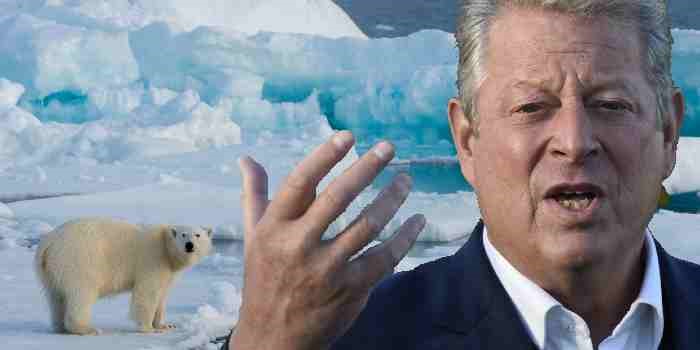
Why were internationally acclaimed scientists unable to predict this marked increase in the extent of summer sea ice?
Arctic Sea Ice Defies Scaremongers
By Jack Dini
For years scaremongers have been telling us that the Arctic would soon be ice free in summer. 1
In 2007 Professor Wieslaw Maslowski told us that northern polar waters could be ice free in summers within just five to six years.
A year later, in 2008 Professor David Barber went one step further, saying the ice would be all gone that very summer.
For years scaremongers have been telling us that the Arctic would soon be ice free in summer. 1
In 2007 Professor Wieslaw Maslowski told us that northern polar waters could be ice free in summers within just five to six years.
A year later, in 2008 Professor David Barber went one step further, saying the ice would be all gone that very summer.
Al Gore notoriously warned us in 2009 that there is a 75 percent chance that the entire north polar ice cap, during the summer months, could be completely ice free within five to seven years.
For sheer persistence in getting it wrong, however, the prize must go to Peter Wedhams, professor and head of the Polar Ocean Physics Group in the Department of Applied Mathematics and Theoretical Physics at the University of Cambridge:
- In 2012, he predicted that the Arctic would be ice free by 2015/16.
- In 2014, he thought it might last till 2020.
- In 2016, he confidently predicted the Arctic would be ice free that summer (though curiously he now defined ‘ice-free’ as less than 1 million square kilometers).
All these pronouncements were designed for political propaganda purposes, not for scientific reasons, and were widely propagated by the gullible media.
Unfortunately, for Professor Wedhams, the sea ice has not been melting away as ordained. On the contrary, it has been remarkably resilient.
This year and last has the largest extents since 2013 and 2014, and there is considerably more ice around this year than in 2007 and 2008. 1
Melting of Arctic ice has been used as a major data point in the justification of restrictive energy policies by many countries. It is ironic, and infuriating, that millions across the world are suffering from high energy prices and blackouts at the same time that Arctic sea ice has been at its greatest extent in many years 2
With ice coverage for July and August remaining above the 10 year average of 2010-20, the extent of summer sea ice in the Arctic has surprised experts who once predicted that such levels would be impossible.
This stands in stark contrast to the dominant climate narrative that predicts the dwindling of summer ice in the Arctic. As mentioned earlier, some politicians and scaremongers had even claimed that parts of the Arctic would be ice free by now.
Why were internationally acclaimed scientists unable to predict this marked increase in the extent of summer sea ice? Is it because their overall approach is biased toward supporting the theory that carbon dioxide is warming the planet to dangerous levels? Or is it because their models are incapable of predicting future temperatures?
The answers must come from the doomsayers themselves. They need to explain why Arctic summer temperatures have been no different from the 44 year average and why summer sea ice is above decadal averages. 2
Paul Homewood bluntly notes, “What is astonishing is that these buffoons are still in a job and living off the taxpayer. In any other field of science, to be so thoroughly wrong for so long would have quickly led to well earned oblivion.” 1
References
-
Paul Homewood, “The climate scaremongers: the great Arctic sea ice scam,” climatechangedispatch.com, September 23, 2022
-
Vijay Jayaraj, “Arctic ice at decade high level: can doomsayers explain?”, reddit.com, August 30, 2022
From canadafreepress.com